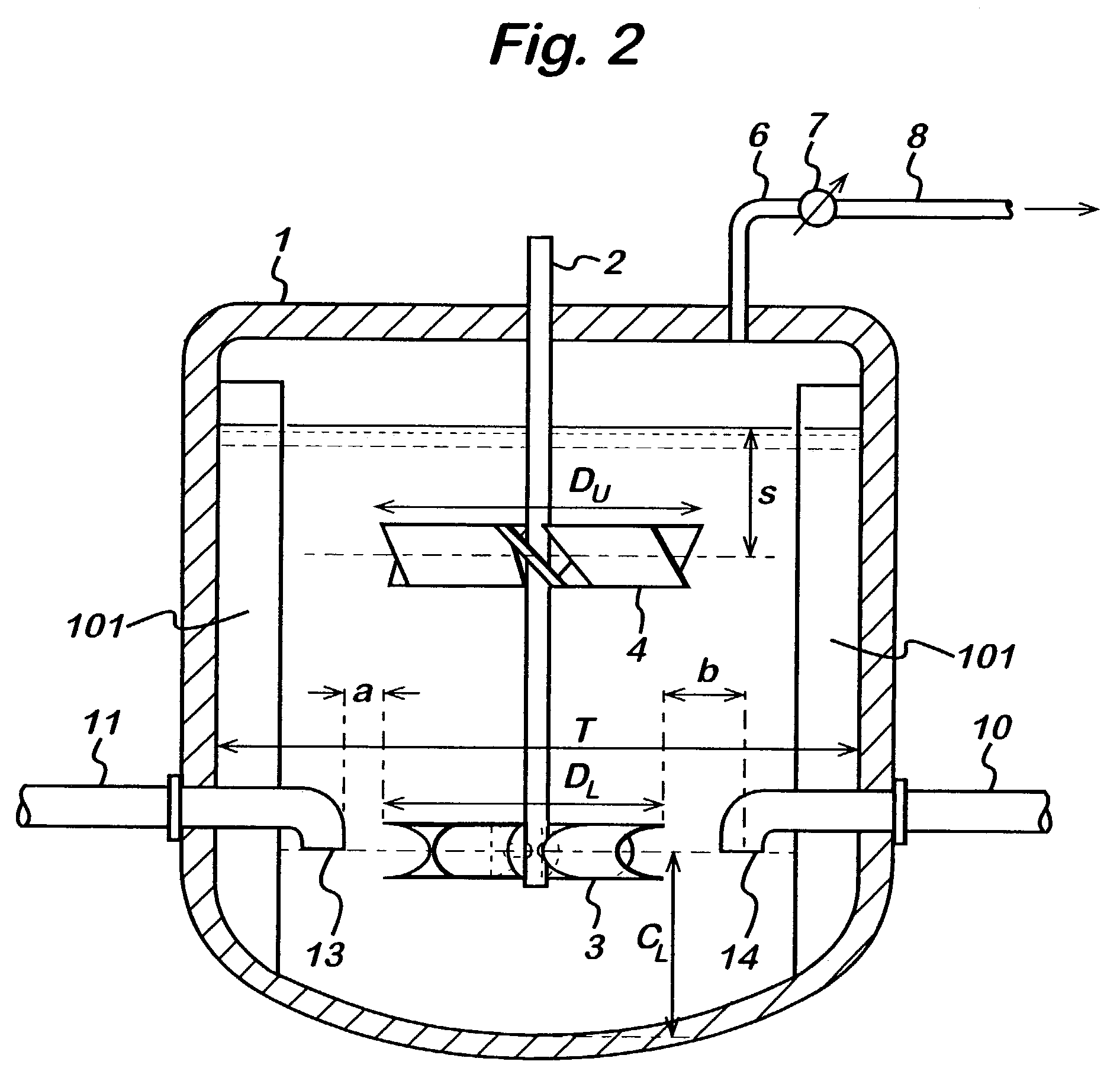Apparatus for and method of producing aromatic carboxylic acids
a technology of aromatic carboxylic acid and apparatus, which is applied in the preparation of carboxylic compounds, liquid degasification, separation processes, etc., can solve the problems of increasing the cost of the operating process, undetected high levels of the above-mentioned impurities in the final tpa product, and insufficient pure terephthalic acid obtained for direct use in polyester production, etc., to reduce the degradation of solvent and precursor, and reduce the effect of mass transfer
- Summary
- Abstract
- Description
- Claims
- Application Information
AI Technical Summary
Benefits of technology
Problems solved by technology
Method used
Image
Examples
examples
Reduction in Impurities
[0064]Data exemplifying the present invention are given in Table 1 below. This data was obtained from the well established TAREACT computer model of the oxidation process. Example 1 shown in the table employs the Gasfoil (lower) / up-pumping pitch blade turbine (PBT) (upper) configuration of the invention, while Comparative Example 1 uses the known reactor configuration PBT (lower) / Rushton Turbine (RT) (upper) in use within the industry. Table 2 shows the mixing elements and feed configurations for these cases.
[0065]The configuration of Example 1 (Gasfoil / PBT) employs typical reactor conditions, as described within this document, that are standard in the art of p-xylene oxidation. P-xylene, catalyst and fresh and recycled solvent are fed to the liquid inlet in the proximity of the lower Gasfoil impeller.
[0066]Comparative Example 1 employs a vessel of similar dimensions to that of Example 1 but uses a two impeller configuration where the lower impeller is a PBT i...
PUM
| Property | Measurement | Unit |
|---|---|---|
| angle | aaaaa | aaaaa |
| angle | aaaaa | aaaaa |
| angle | aaaaa | aaaaa |
Abstract
Description
Claims
Application Information
 Login to View More
Login to View More - R&D
- Intellectual Property
- Life Sciences
- Materials
- Tech Scout
- Unparalleled Data Quality
- Higher Quality Content
- 60% Fewer Hallucinations
Browse by: Latest US Patents, China's latest patents, Technical Efficacy Thesaurus, Application Domain, Technology Topic, Popular Technical Reports.
© 2025 PatSnap. All rights reserved.Legal|Privacy policy|Modern Slavery Act Transparency Statement|Sitemap|About US| Contact US: help@patsnap.com



